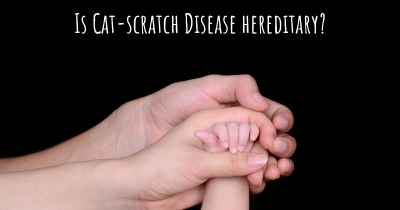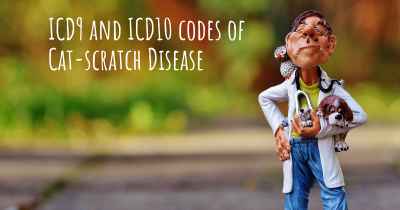What are the best treatments for Cat-scratch Disease?
See the best treatments for Cat-scratch Disease here

Treatments for Cat-scratch Disease
Cat-scratch disease (CSD) is a bacterial infection caused by the bacterium Bartonella henselae. It is primarily transmitted to humans through scratches or bites from infected cats. While most cases of CSD are self-limiting and resolve on their own, some individuals may require treatment to alleviate symptoms and prevent complications.
1. Antibiotics: The use of antibiotics is the mainstay of treatment for cat-scratch disease. The choice of antibiotic depends on the severity of symptoms and the presence of complications. In mild cases, where there is no systemic involvement, antibiotics may not be necessary. However, if symptoms persist or worsen, or if there are signs of systemic infection, antibiotics are typically prescribed. Commonly used antibiotics include azithromycin, clarithromycin, and doxycycline. The duration of antibiotic treatment is usually 5-14 days.
2. Pain relief: Cat-scratch disease can cause localized pain and discomfort at the site of the scratch or bite. Over-the-counter pain relievers such as acetaminophen or nonsteroidal anti-inflammatory drugs (NSAIDs) like ibuprofen can help alleviate these symptoms. It is important to follow the recommended dosage and consult a healthcare professional if pain persists or worsens.
3. Warm compresses: Applying warm compresses to the affected area can help reduce pain and swelling associated with cat-scratch disease. The warmth promotes blood circulation and may aid in the healing process. Gently place a warm, damp cloth on the affected area for 10-15 minutes several times a day.
4. Lymph node drainage: In some cases, cat-scratch disease can cause swollen lymph nodes, particularly in the armpit or groin region. If the swelling is significant and causes discomfort, a healthcare professional may recommend draining the lymph nodes. This procedure should only be performed by a trained medical professional to avoid complications.
5. Rest and self-care: Resting and taking care of oneself is crucial during the recovery period. Adequate rest allows the body to heal and fight off the infection more effectively. It is important to maintain good hygiene, keep the affected area clean, and avoid scratching or irritating the site of the scratch or bite.
6. Follow-up: After initiating treatment, it is important to follow up with a healthcare professional to monitor the progress of the infection. They can assess the response to treatment, evaluate for any complications, and provide further guidance if needed.
7. Prevention: Preventing cat-scratch disease is essential, especially for individuals who are more susceptible to infections or have weakened immune systems. Avoiding rough play with cats, especially kittens, and practicing good hand hygiene after handling cats can reduce the risk of contracting the disease. Regular flea control for cats can also help prevent the transmission of the bacteria.
Conclusion: Cat-scratch disease is usually a self-limiting condition, but in some cases, treatment may be necessary to alleviate symptoms and prevent complications. Antibiotics, pain relief, warm compresses, lymph node drainage, rest, and self-care are important aspects of managing cat-scratch disease. Following up with a healthcare professional and taking preventive measures can help ensure a full recovery and reduce the risk of future infections.








